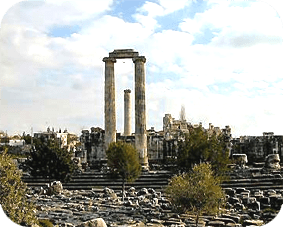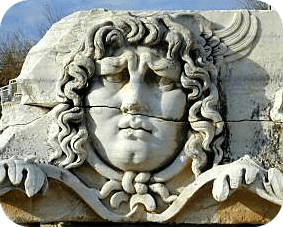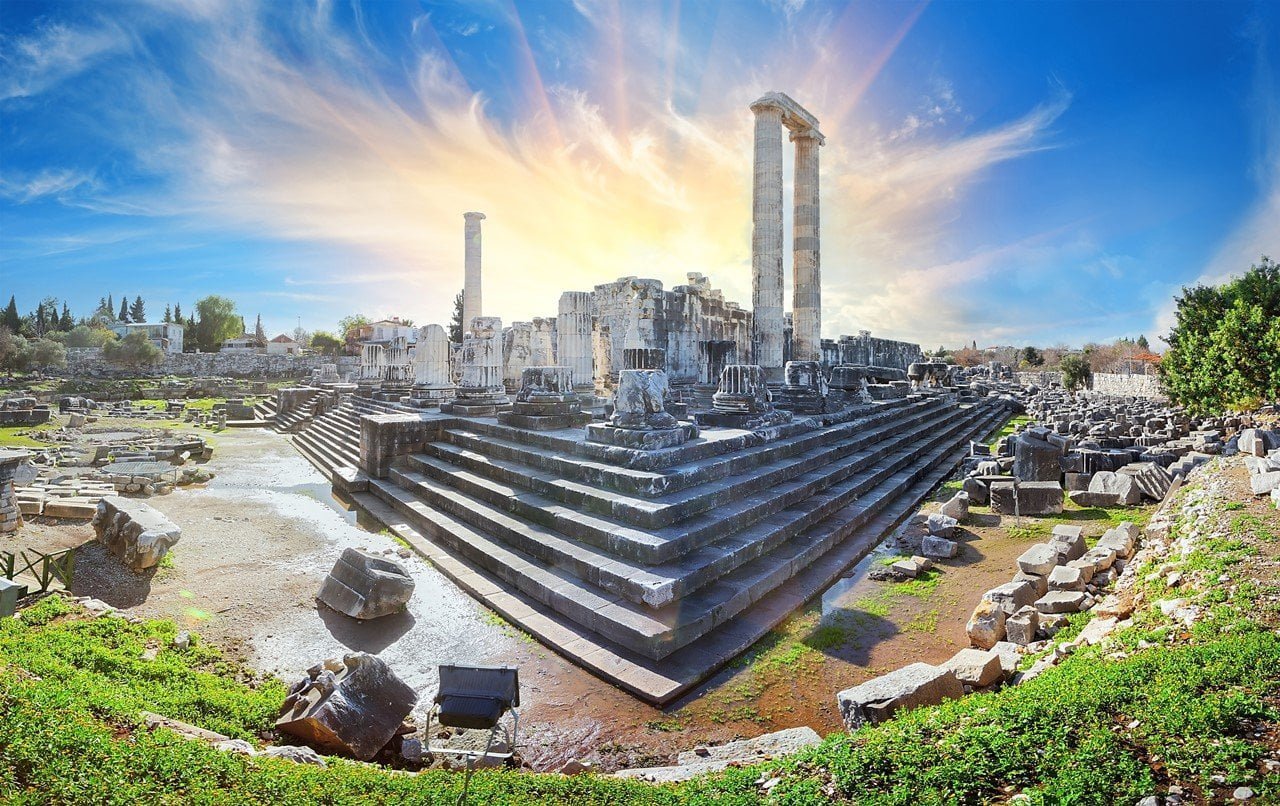


Didyma
The Apollo Temple of Didyma, located within the boundaries of the village of Yeni Hisar in the Söke district of the province of Aydin, was known as a sanctuary and seat of an oracle attached to Miletus. Recent excavations revealed remains which showed that Didyma was not only a seat of an oracle but also the site of dense settlement. The research concerning the origins of the names of Didyma and Didymaion has been a subject of discussion. Along with several other myths, it was thought that the name Didymaion, which meant “twin temples”, was related to Artemis, the twin sister of Apollo. However, as no definite evidence could be found, this theory also remains as a myth. The first excavations in Didyma were made in 1858. The area excavated was the Sacred Road. From the excavations it was understood that the road was 16,5km long. The width of the road which was made of stone blocks, changed between 5 and 7 metres. On both sides of it were rows of shops, votive fountains, monumental tombs, baths, and the area for the cult of Artemis. The Delphinion is accepted as the starting point of the Sacred Road connecting Miletus and Didyma. The Apollo Temple of Didyma, which according to Pausinas, had existed before the 10th century BC, was built at the end of the 8th century BC. The small and simple temple contained a secos, an altar, a sacred source, a cult statue and the symbols of Apollo. The construction of The Hellenistic Didymaion was begun in 313 BC, and it was erected over the Archaic temple which was burned and destroyed in 494 BC. The donations of Alexander the Great and of King Seleucus I of Syria were of great help in the rebuilding of the Didymaion. The Didymaion emerges as the third largest edifice of the Hellenistic period. Besides being for centuries a very important oracle seat, the Didymaion was also renowned for its sacred water, sacred grove, the many sacred elements it housed, and its wealth. One other feature of the Didymaion was that it had the right to shelter. This right which was termed “the Light of Asylum”, was the recognition of the right of inviolability to people who took refuge in the temple. The reason for this extremely impressive and magnificent temple not being considered among the seven wonders of the world is related by the authorities to its not having been completed.


0 Comment